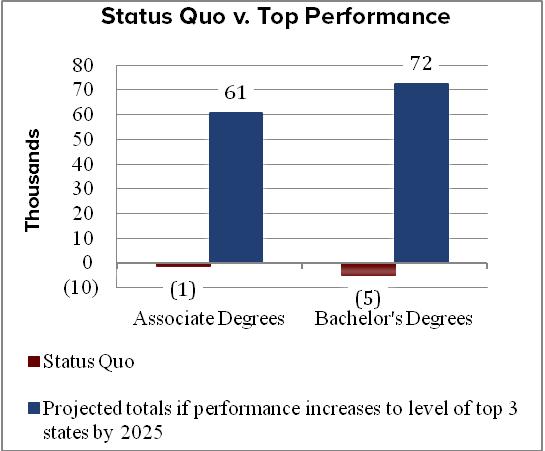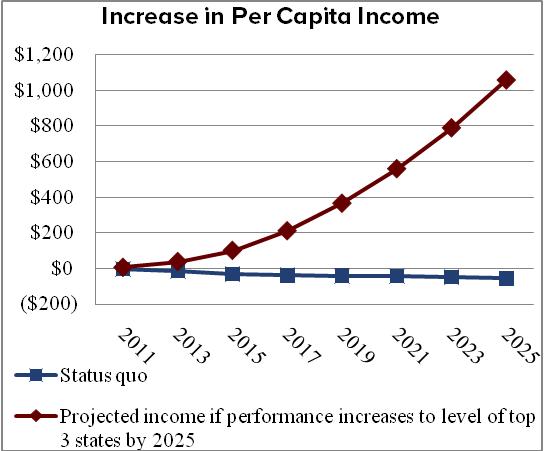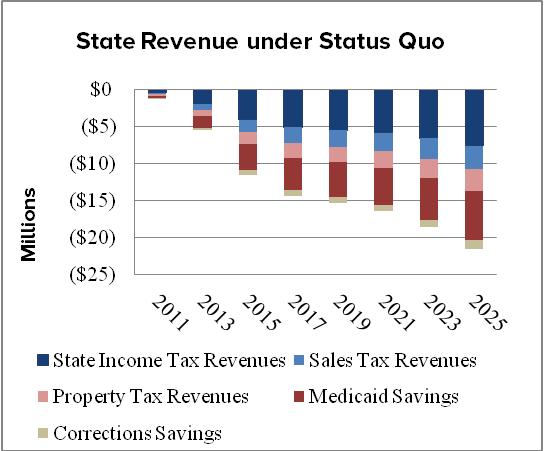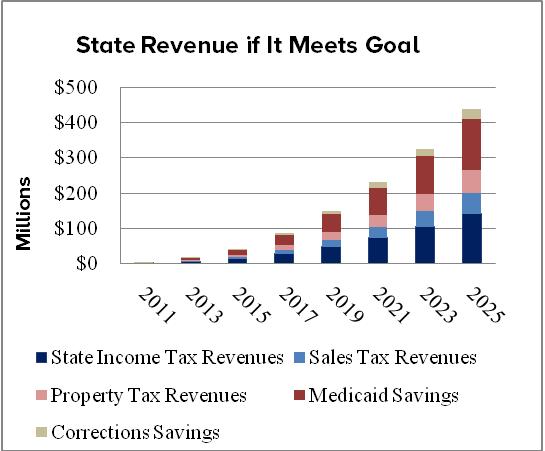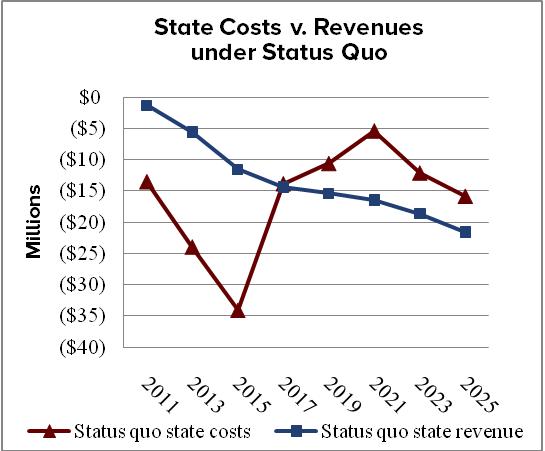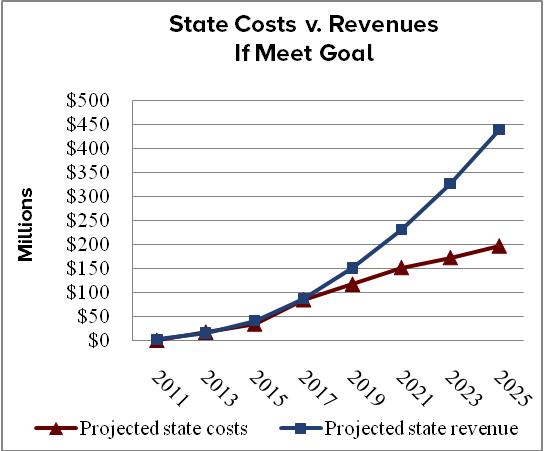Kansas: The Return on Investment to Increasing Postsecondary Credential Attainment
Visit the Kansas Return on Investment dashboard tool >>
(NOTE: Dashboard takes a few seconds to load)
|
Kansas Must Improve College Participation and Credential Attainment Rates to Remain Competitive |
|
|
|
|
Meeting Credential Goal Produces Significant Personal Economic Return |
|
|
Per capita income increases when the state meets 60% credential attainment goal
|
|
|
Meeting Credential Goal Produces Significant Economic Returns to the State |
|
|
Status quo produces negative returns Under current postsecondary investment patterns, Kansas’ state revenues will decrease by about $22 million in 2025.
|
Meeting 60% credential goal pays off Under current postsecondary investment patterns, Kansas’ state revenues will decrease by about $440 million in 2025. |
|
State Revenues Exceed Costs When Credential Goal is Met |
|
|
Status Quo: Costs exceed revenues Under current postsecondary investment patterns, Kansas’ postsecondary costs are negative, but so are state revenues. By 2025, revenues are about $6 million below costs.
|
Meet 2025 goal: Revenues exceed costs By meeting the 60% credential attainment goal, Kansas’ revenues exceed postsecondary costs by approximately $240 million in 2025. |
|
This analysis was prepared using the CLASP-NCHEMS Return on Investment Dashboard tool. See clasp2022.tealmedia.dev/ROIdashboard |
|
